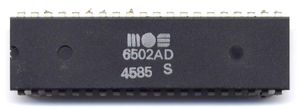I’ve become a big fan of RSS. Using an aggregator means I can catch up with way more web sites than before.
If web sites are interested in eyeballs for their content, they should be sure to publish a full RSS feed. Not doing so is a very bad idea — why do you think I have the time to come click on your web site every day? I don’t. I’ll read from within my aggregator, and if I want to comment, then I’ll click.
I’m a little more forgiving than Scoble. Okay, so some sites want you to visit so they get the advertising revenue, so they don’t do a full feed. But for heaven’s sake, if you’re not going to publish a full feed, then please get your headlines and summaries in order. Don’t make me guess what the article’s about, because I won’t bother — I’ll just skip to the next thing.
ArsTechnica does okay on theirs: An article entitled “EA brand ‘tarnished’ according to analyst“ and with the summary “A game industry analyst has issued a report stating that poor ratings and low-quality games are starting to diminish the EA brand. We’ll delve into the challenges the gaming giant may be facing” sums up everything the article is about, so I can make an informed decision about whether it’s worth clicking through.
The brilliant Daniel Rutter does absolutely crap at this on his blog: An article entitled “Saving the environment without looking stupid: A primer“ with a summary of “There’s something to be said for dog-sleds, too” gives me absolutely no clue that it’s a very good, detailed look at the qualities of the Toyota Prius.
No clues. Should I click, not knowing if it’ll be worth the X seconds to decide if it’s worth reading? If I’m at all stretched for time, I won’t bother. It’s not like there’s nothing else to read out there.
PS. Interesting article on full feeds vs partial.

 I reckon it couldn’t be farther from the truth. I reckon it was Chuck Peddle.
I reckon it couldn’t be farther from the truth. I reckon it was Chuck Peddle.